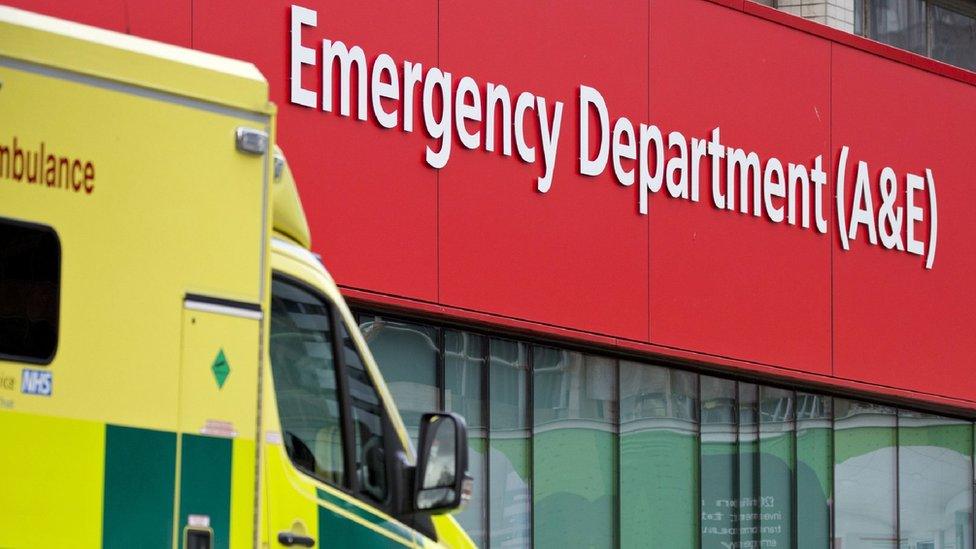NHS England makes slight improvement
- Published

The number of people treated within four hours at A&E departments recovered in the second week of January, BBC Newsnight has learned.
But while performance has improved since the first week in January, it remains way below its target of 95%.
Leaked data covering last week puts the national figure at 82.4% with only five hospitals meeting the 95% standard.
NHS England said they were doing "everything [they] can to ensure the best care possible is being delivered."
While the national figure remains low, it does show an improvement on the first week in January, which is usually the health service's hardest week. An earlier exclusive report by BBC News had revealed that, in that first week, 79.6% of patients were seen within four hours and only one hospital met the 95% target.
The new analysis by NHS Improvement, which oversees foundation and NHS trusts, reveals a general pattern of gradual improvement since the low of January 3, when the daily A&E rate reached a low of 75.8%. Over this weekend, the service managed to see more than 85% of patients inside the four-hour waiting target.
A spokesman for NHS Improvement said: "In the past few days, we've seen a real improvement in how quickly patients are being seen and discharged from accident and emergency departments - including to social care. But we know the pressures facing our hospitals will continue over the remaining weeks of winter and we're working hard to ensure they have the support they need to offer patients quick, safe, quality care."

The four-hour A&E target explained
It measures the point at which a patient arrives at A&E to when they are admitted, discharged or transferred elsewhere
It applies to all patients from those with life-threatening emergencies to minor ailments
Hospitals are meant to achieve the four-hour target in 95% of cases
The last time it was met was July 2015

The leak also reveals that, in the second week of January, 14,700 people who had been admitted to a hospital were left waiting for more than four hours to find a bed.
Of these, 140 people endured so-called "trolley waits" of more than 12 hours. While these figures are well down on the first week in January, they remain historically high - up by 3,000 on the equivalent week two years ago.
There are further signs of vulnerability: for the week covered by the data, which runs 9 to 15 January, the number of beds in use remained an exceptionally high 95.3%, with 4.9% of the service's beds occupied because patients were stuck in hospitals awaiting transfer to another care provider (a so-called "delayed transfer of care").
This is well above the preferred rate of bed use. A large number of studies of hospital management, external have demonstrated how, when there are few spare hospital beds, even very modest further reductions in the number of free beds can dramatically increase the likelihood of any given patient being caught in a hospital backlog, which can lead to significant delays in care.
That high utilisation rate is why, in addition to the elevated rate of trolley waits, there were 177 cancelled operations. That figure is much higher than the previous week, but is likely to be distorted because of the Bank Holiday. The rate at which operations was being cancelled also fell during the week.
The strain on the service will have been eased because of the expected fall in traffic over the second week of the year, with average daily A&E attendances dropping from 50,993 in the first week of the year to 47,195 in the second.
A spokesperson for NHS England added: "We started planning for winter this year earlier than ever before and will continue to do everything we can to ensure the best care possible is being delivered."